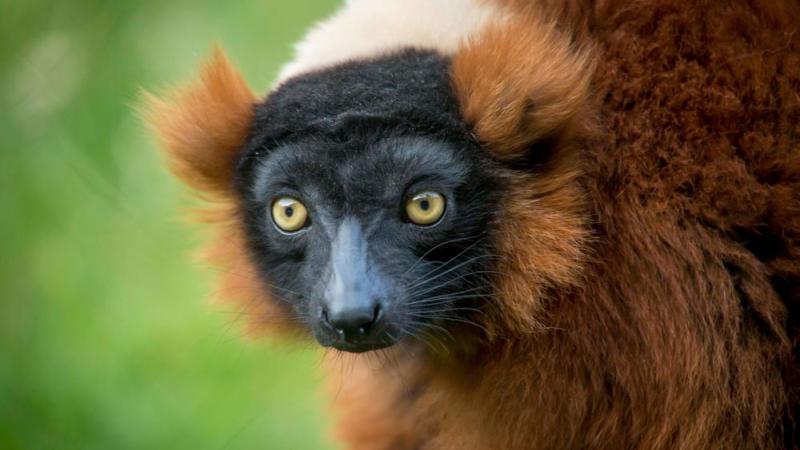Red alert: New lemurs join zoo conspiracy

Zoo welcomes two red-ruffed sisters to the lemur family
The Oregon Zoo welcomed two red-ruffed lemurs this week, bringing the total number in the conspiracy — the name for a group of lemurs — to seven. At 2 years old, twin sisters Thalia and Calliope are the youngest members of the family, and also the largest.
"The red-ruffed lemurs are a bit bigger than the other species in the group," said Asaba Mukobi, the zoo's senior primate keeper. "And of course, their bright red fur makes them easy to identify."
Visitors can see the red-ruffed lemurs exploring their new habitat on their own this weekend, and next week the zoo's three ring-tailed lemurs and two black-and-white ruffed lemurs will join them. All lemurs are native to Madagascar, and it's not unusual for several species to live in the same space.
"Lemurs are naturally very social," said Mukobi. "Wild lemurs live in big family groups, and different species do really well together. Plus, the new lemur habitat is quite large, so each family group can have their own space when they choose to."
The Oregon Zoo's lemurs recently relocated to a new home in the Africa area of the zoo. Its many water features, trees and rock formations make it easy for the furry primates to separate into family groups, but there's still plenty of room for all seven to spend time together.
Calliope and Thalia arrived at the zoo last month and have been getting to know their keepers behind the scenes. Caregivers say they're settling in well, and the two red-ruffed lemurs quickly began exploring their new surroundings and introducing themselves to the rest of the group.
Though their inquisitive faces and longer snouts resemble foxes, lemurs are actually prosimians, a suborder of primate known for their wet noses and keen sense of smell. There are more than 100 known species of lemur, all found in only one area on Earth: Madagascar and the nearby Comoro Islands. Due to a combination of deforestation, habitat loss and poaching, lemurs are one of the most endangered mammal groups in the world.
The new arrivals came to the Oregon Zoo on a recommendation by the Association of Zoos and Aquariums' Species Survival Plan for lemurs — a cooperative program among accredited zoos that helps create genetically diverse, self-sustaining populations to guarantee the long-term future of animals. These SSPs also support relevant field projects, research and public education to help prevent animal endangerment and extinction.
More News

Rescued cougar cubs are venturing out
A pair of orphaned cougar cubs, rescued and brought to the zoo by Washington Department of Fish and Wildlife staff in November, have begun exploring their outdoor habitat.April 17, 2025

Zoo seeks pika watchers for summer season
The Oregon Zoo is recruiting volunteers for Cascades Pika Watch.April 15, 2025

Zoo convenes action for imperiled elephants
Sabah government representatives joined conservation NGOs, local communities, palm oil producers, and tourism operators this week in the fight to save the world’s smallest elephants from extinction.April 11, 2025

